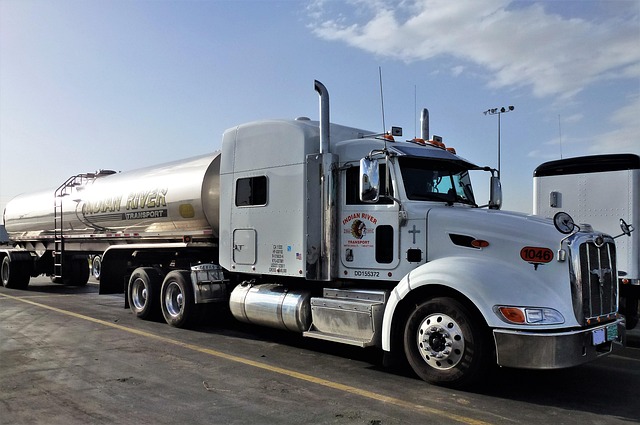Looking to register your car in California? This comprehensive guide walks you through every step, from gathering essential documents to paying registration fees. We’ll help you navigate the process efficiently by scheduling a visit to a DMV office, performing critical checks like vehicle inspection and VIN verification, and filling out registration forms accurately. By following these steps, you’ll be on your way to securing your California vehicle registration in no time.
- Prepare Required Documents
- Schedule and Visit a DMV Office
- Perform Vehicle Inspection and VIN Verification
- Complete Registration Forms
- Pay Registration Fees and Obtain Your Plates
Prepare Required Documents

Before registering your car in California, you’ll need to gather several key documents. The first step is to obtain a Vehicle Identification Number (VIN) verification from the DMV or through a mobile vin verifier. This process ensures that your vehicle’s information matches the records, and it’s crucial for a successful registration. You can opt for a mobile vin inspection to make this step easier; many services allow you to complete this verification right from your location.
Once you have your VIN verified, collect essential documents such as proof of ownership (a title or bill of sale), current vehicle registration (if applicable from another state), insurance proof, and identification documents like a driver’s license. It’s recommended to check the California DMV website for an exhaustive list of requirements to ensure a smooth registration process.
Schedule and Visit a DMV Office

Before you begin the registration process, it’s crucial to schedule and visit a DMV office. This ensures a smoother experience as you’ll need to present essential documents and undergo important verifications, such as a DMV VIN verification. The process typically involves queuing up for your turn, so be prepared with all necessary paperwork. It’s also worth considering the option of using a mobile vin verifier if available, as this can expedite the vin inspection process by allowing you to verify your vehicle’s history remotely before visiting the DMV.
During your visit, you’ll need to fill out registration forms, pay the required fees, and provide proof of insurance, ownership, and identity. The DMV staff will guide you through each step, ensuring that all information is accurate and complete. Remembering to bring along valid documents, including a clean driving record, can significantly contribute to a quick and efficient vin inspection process, enabling you to finalize your car’s registration in no time.
Perform Vehicle Inspection and VIN Verification

Before registering your car in California, it’s crucial to ensure that your vehicle meets all safety and emission standards. One essential step is to perform a Vehicle Inspection, which includes a thorough check of critical components like brakes, lights, tires, and emissions systems. This inspection verifies that your car is safe for the road.
Additionally, you’ll need to conduct a DMV VIN Verification using your vehicle’s unique Identification Number (VIN). Many California residents opt for a mobile vin verifier to simplify the process. These services allow you to quickly and easily verify your VIN online or via a mobile app, saving time and effort compared to traditional methods. A valid and accurate VIN is vital as it links your vehicle to its history, ensuring that all necessary documents are in order for a successful registration.
Complete Registration Forms

To register your car in California, you’ll need to complete various forms and undergo essential checks, including a DMV VIN (Vehicle Identification Number) verification. This process is crucial for ensuring that your vehicle meets all legal standards before hitting the road. Start by acquiring the necessary registration documents from the California Department of Motor Vehicles (DMV). Fill out Form DV-140, which serves as the Application for Title and Registration. Accurately entering your vehicle’s details, including its make, model, year, and VIN, is paramount during this step.
A mobile vin verifier or a vin inspection tool can aid in this process by providing fast and accurate VIN data. These tools ensure that the information you provide aligns with the vehicle’s actual specifications, streamlining your registration at the DMV. Once your forms are complete, double-check for any discrepancies before submission to avoid delays.
Pay Registration Fees and Obtain Your Plates

After completing your vehicle’s necessary inspections, including a DMV VIN verification, it’s time to pay the registration fees and secure your personalized license plates. This crucial step formalizes your car’s legal status in California. The process typically involves visiting a local DMV office or utilizing their online platform to register your vehicle digitally.
You’ll need to settle the registration fee, which varies based on your vehicle’s type and age. Once paid, you can apply for license plates, usually available as standard or custom designs. Ensure that your plates are displayed correctly on your vehicle during operation, as California law mandates proper plate placement for safety and identification purposes. Consider utilizing a mobile vin inspection service to facilitate this process by providing convenient, accurate VIN verification, ensuring a seamless registration experience.
Registering a car in California involves several straightforward steps, from gathering essential documents to paying registration fees. By preparing in advance, scheduling a visit to a DMV office, and completing each process diligently—including a crucial dmv vin verification—you can ensure a smooth and efficient car registration experience. Remember to keep your registration up to date for legal compliance and safety reasons.
